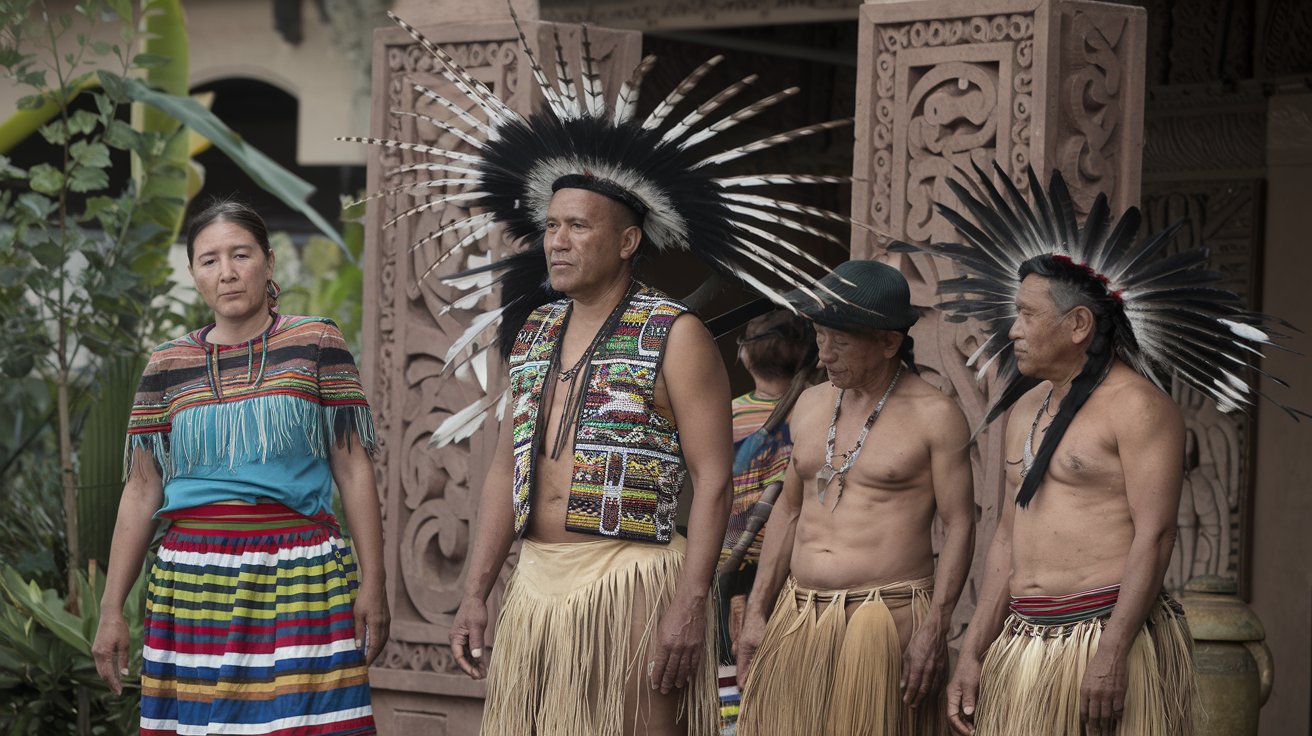
Abercrombie & Fitch has a rich history that spans over 125 years, evolving from a small outdoor gear shop to a global fashion icon. Founded by David T. Abercrombie in 1892, the brand initially catered to affluent outdoorsmen. With the entry of Ezra Fitch, the company expanded its offerings and opened a flagship store on Madison Avenue. Despite facing financial struggles and controversies, Abercrombie & Fitch experienced a resurgence under Mike Jeffries in the late 20th century. Today, the brand operates multiple subsidiaries, including Hollister and abercrombie kids, and continues to adapt to modern consumer preferences. What makes Abercrombie & Fitch so enduring?
Founding and Early Years
Abercrombie & Fitch has a storied history that dates back to the late 19th century. Its journey from a small shop to a global fashion brand is filled with interesting milestones.
- Abercrombie & Fitch was founded by David T. Abercrombie on June 4, 1892, in a small waterfront shop at 36 South Street in downtown Manhattan, New York.
- The company initially sold high-quality outdoor gear, including camping, fishing, and hunting equipment, catering to affluent outdoorsmen and women.
- In 1900, Ezra Fitch, a wealthy New York businessman and lawyer, purchased a major share in Abercrombie Co. and became a co-founder. The partnership between Abercrombie and Fitch was marked by frequent disagreements over the company's direction.
Expansion and Prosperity
Under Ezra Fitch's leadership, Abercrombie & Fitch expanded its operations and became a household name for outdoor enthusiasts.
- Under Fitch's leadership, the company expanded its operations, opening a large department store on Madison Avenue in 1910. This store featured a shooting range, golf school, and a mail-order catalog that mailed out 50,000 copies to consumers.
- By the 1920s, Abercrombie & Fitch had achieved significant financial success, with record sales of $6.3 million in 1929. The company continued to grow despite the Great Depression.
- After Abercrombie left the company in 1907, Fitch took complete control and ushered in the "Fitch Years," a period of great prosperity for the brand. During this time, the company published extensive catalogs and became the first store in New York to sell clothes to both men and women.
Iconic Stores and Post-War Era
Abercrombie & Fitch's flagship stores became landmarks, and the brand continued to thrive even after World War II.
- The iconic 12-story Madison Avenue flagship store was a shrine to all things outdoors, featuring a shooting range, bookstore, art gallery, watch repair suite, golf section with a resident pro, and even a pool for fly-fishing lessons.
- After World War II, Abercrombie & Fitch continued to supply military equipment and uniforms for all branches, including men and women. The company also supplied gear to new generations of presidents like Eisenhower and Kennedy.
Decline and Rebirth
Despite its early success, Abercrombie & Fitch faced financial struggles in the mid-20th century, leading to a significant decline.
- By the mid-20th century, Abercrombie & Fitch began to decline. The company faced financial struggles and eventually closed its operations in 1977.
- In 1988, Limited Brands (now known as L Brands) purchased the ailing brand and brought in Mike Jeffries, who revolutionized the image of Abercrombie & Fitch to become an upscale youthful fashion retailer.
Jeffries Era and New Ventures
Mike Jeffries played a pivotal role in transforming Abercrombie & Fitch into a trendy fashion retailer, launching new brands and expanding its market.
- Under Jeffries' leadership, Abercrombie & Fitch experienced a significant resurgence. By 1999, the company had 36 stores and was making $50 million in sales. In 1996, when it went public, Abercrombie & Fitch had about 125 stores, sales of $335 million, and was making $25 million in profits.
- In 2000, the company launched its subsidiary, Hollister, which was based on the Southern California surf lifestyle and targeted high school students. This move helped Abercrombie & Fitch expand its market and appeal to a younger demographic.
- In 2000, Abercrombie & Fitch also launched the abercrombie kids brand, catering to children aged 7 to 14. This expansion further diversified the company's product offerings.
Global Expansion and Milestones
Abercrombie & Fitch's international expansion and significant milestones marked its growth into a global fashion powerhouse.
- Abercrombie & Fitch began its international expansion in Europe in 2008, followed by Hollister store openings in the region. The company also expanded into the APAC region in 2009.
- In 2017, Abercrombie & Fitch celebrated its 125th anniversary and opened a new store prototype for the first time in over 15 years. The company also exceeded $1 billion in annual digital sales for the first time in its history.
Controversies and Rebranding
The brand faced several controversies over the years, leading to efforts to rebrand and appeal to a more mature audience.
- Abercrombie & Fitch faced several controversies, including lawsuits for discrimination and backlash for offensive product lines. In 2002, the brand received public backlash from Asian Americans for images on T-shirts that depicted Asian stereotypes. The company removed the products from their shelves and settled a class-action suit in 2004 without admitting any wrongdoing.
- In 2012, the company was sued by a pilot who claimed Jeffries had made odd requests for staff aboard his private jet. The company settled the case without admitting wrongdoing.
- In recent years, Abercrombie & Fitch has rebranded itself to appeal to a more mature and conscientious audience. The company has seen an increase in sales as a result of these efforts.
Corporate Purpose and Global Presence
Abercrombie & Fitch's corporate purpose and global presence reflect its commitment to quality and individuality.
- Abercrombie & Fitch's corporate purpose is to help people express their individuality and style. The company aims to provide products of enduring quality and exceptional comfort that allow consumers around the world to be who they truly are.
- As of Q4 2022, Abercrombie & Fitch has over 25,000 associates and operates more than 750 stores globally. The company has home offices in Columbus, Ohio; London; and Shanghai.
Stock Performance and Brand Evolution
The company's stock performance and brand evolution highlight its resilience and adaptability in the fashion industry.
- As of August 21, 2024, Abercrombie & Fitch's stock price is $170.88, with a 2.91% change from the previous day. The company has seen significant fluctuations in its stock value over the years, from a high of around $80 per share in 2007 to a low of around $10 per share in 2017.
- From its origins as an outdoor retailer to its current status as a global fashion brand, Abercrombie & Fitch has undergone numerous transformations. The company has expanded its product lines and target markets, adapting to changing consumer preferences and cultural trends.
Digital Sales and Store Prototypes
Abercrombie & Fitch's digital sales growth and new store prototypes reflect its efforts to modernize and enhance the shopping experience.
- Abercrombie & Fitch has seen significant growth in its digital sales. In 2017, the company exceeded $1 billion in annual digital sales for the first time in its history, marking a major milestone in its digital transformation.
- Abercrombie & Fitch operates five renowned brands: Abercrombie & Fitch, abercrombie kids, Hollister, Gilly Hicks, and Social Tourist. Each brand caters to different demographics and offers unique products that align with the company's commitment to quality and comfort.
- In 2017, Abercrombie & Fitch opened a new store prototype for the first time in over 15 years. The new design reflects the company's efforts to modernize its retail experience and appeal to a broader audience.
Headquarters and Publications
The company's headquarters and publications have played a significant role in its operations and brand image.
- Abercrombie & Fitch has its corporate headquarters in New Albany, Ohio. The company moved to this location in 2001 and has since expanded its headquarters to accommodate its growing operations.
- In 2003, Abercrombie & Fitch discontinued its quarterly magazine, A&F Quarterly, due to customer complaints about the content.
New Brands and Flagship Stores
The launch of new brands and flagship stores has helped Abercrombie & Fitch diversify its offerings and enhance its brand image.
- In 2004, Abercrombie & Fitch launched RUEHL No.925, a brand targeting older consumers aged 22 to 35. This move further diversified the company's product offerings and helped increase revenue.
- In November 2005, Abercrombie & Fitch opened its first-ever flagship store on Fifth Avenue in New York City. This store marked a significant milestone in the company's efforts to elevate its brand image to near-luxury status.
- Abercrombie & Fitch began its Canadian expansion in January 2006, opening two A&F stores and three Hollister Co. stores in Toronto and Edmonton. By fall 2006, a third Canadian Abercrombie & Fitch store opened in the Toronto Eaton Centre.
- In 2006, Abercrombie & Fitch opened a west coast flagship store in The Grove. This store was part of the company's strategy to expand its presence in key markets and enhance its brand image.
- On March 22, 2007, Abercrombie & Fitch opened its first European flagship store in London at 7 Burlington Gardens in Savile Row. The store generated significant revenue in its first six hours of operation and remains one of the most profitable locations.
Design Changes and Record Sales
Design changes and record sales achievements have marked significant milestones in Abercrombie & Fitch's history.
- Beginning in 2007, Abercrombie & Fitch revamped its canoe stores with dark louvers, enhancing the aesthetic appeal of its retail spaces.
- In 2007, Abercrombie & Fitch achieved record sales of $3.749 billion, marking a significant milestone in the company's financial performance.
Diversity and Public Perception
Abercrombie & Fitch has faced criticism for its lack of diversity and public perception, leading to efforts to improve its image.
- Abercrombie & Fitch faced criticism for its lack of diversity in advertising and hiring practices. The company settled a lawsuit in 2004 related to alleged discrimination against minority applicants without admitting any wrongdoing.
- The brand's popularity among teenagers in the 1990s and early 2000s was followed by a decline in public perception due to controversies and lawsuits. However, the company has made efforts to rebrand and regain its appeal.
Rebranding and Hiring Practices
Efforts to rebrand and improve hiring practices have been crucial in Abercrombie & Fitch's recent history.
- Abercrombie & Fitch has rebranded itself to appeal to a more mature and conscientious audience. The company has introduced higher-grade materials and increased prices for its clothing lines, aiming to position itself as a premium fashion brand.
- Abercrombie & Fitch has faced criticism for its hiring practices, particularly regarding the physical appearance of employees. The company has since changed its guidelines to ensure more inclusive hiring practices.
Collections and Expansions
New collections and expansions have helped Abercrombie & Fitch diversify its offerings and cater to a broader demographic.
- A former pilot sued Abercrombie & Fitch in 2012, alleging that Jeffries had made odd requests for staff aboard his private jet. The company settled the case without admitting wrongdoing.
- In an effort to revamp its image, Abercrombie & Fitch launched the Ezra Fitch collection, which featured higher-grade materials and increased prices. This move aimed to position the brand as a premium fashion retailer.
- The abercrombie kids brand has continued to expand, offering a range of clothing items for children aged 7 to 14. This expansion has helped the company cater to a broader demographic.
- Hollister Co., launched in 2000, has been a significant contributor to Abercrombie & Fitch's growth. The brand's focus on the Southern California surf lifestyle has appealed to high school students and helped expand the company's market.
- RUEHL No.925, launched in 2004, targets older consumers aged 22 to 35. This brand has helped Abercrombie & Fitch diversify its product offerings and increase revenue.
Flagship Stores and Market Entry
Flagship stores and market entry strategies have played a significant role in Abercrombie & Fitch's growth and brand image.
- The flagship store on Fifth Avenue in New York City marked a significant milestone in Abercrombie & Fitch's efforts to elevate its brand image to near-luxury status. The store features a sophisticated design and high-end products.
- Abercrombie & Fitch entered the Canadian market in 2006, opening multiple stores across Toronto and Edmonton. This expansion helped the company tap into a new market and increase its global presence.
- The west coast flagship store in The Grove was part of Abercrombie & Fitch's strategy to expand its presence in key markets and enhance its brand image. The store features a modern design and high-end products.
- Abercrombie & Fitch entered the European market in 2008, opening its first European flagship store in London. The store generated significant revenue in its first six hours of operation and remains one of the most profitable locations.
Design Revamps and Financial Milestones
Design revamps and financial milestones have marked significant achievements in Abercrombie & Fitch's history.
- In 2007, Abercrombie & Fitch revamped its canoe stores with dark louvers, enhancing the aesthetic appeal of its retail spaces. This change aimed to create a more sophisticated and modern shopping experience.
- In 2007, Abercrombie & Fitch achieved record sales of $3.749 billion, marking a significant milestone in the company's financial performance. This achievement reflects the company's successful expansion and rebranding efforts.
Future Outlook
Abercrombie & Fitch continues to evolve, focusing on sustainability, diversity, and inclusivity. The company's efforts to rebrand and regain its appeal have been successful, positioning it for a bright future in the fashion industry.
- Abercrombie & Fitch continues to evolve, focusing on sustainability, diversity, and inclusivity. The company's efforts to rebrand and regain its appeal have been successful, positioning it for a bright future in the fashion industry.
Abercrombie & Fitch: A Legacy of Transformation
Abercrombie & Fitch's journey from a small outdoor shop to a global fashion icon is nothing short of remarkable. Founded in 1892 by David T. Abercrombie, the brand has seen its fair share of ups and downs. From the prosperous "Fitch Years" to the decline and eventual rebirth under Mike Jeffries, A&F has continually adapted. Controversies and lawsuits have tested its resilience, but the brand has emerged stronger, focusing on inclusivity and sustainability. With over 750 stores worldwide and a significant digital presence, Abercrombie & Fitch continues to evolve. Its commitment to quality, comfort, and individuality remains at the core of its identity. As it moves forward, the brand's rich history and adaptability position it well for future success in the ever-changing fashion landscape.
Was this page helpful?
Our commitment to delivering trustworthy and engaging content is at the heart of what we do. Each fact on our site is contributed by real users like you, bringing a wealth of diverse insights and information. To ensure the highest standards of accuracy and reliability, our dedicated editors meticulously review each submission. This process guarantees that the facts we share are not only fascinating but also credible. Trust in our commitment to quality and authenticity as you explore and learn with us.


